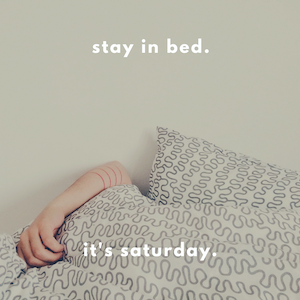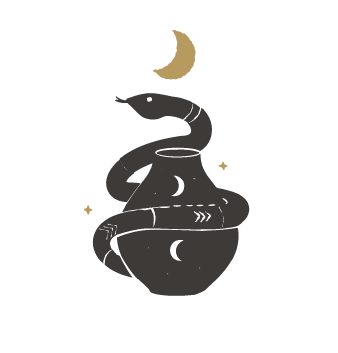Psychologists are becoming more receptive to alternative therapeutic modalities, especially tarot cards. More and more mental health professionals are discovering how tarot can be a tool for promoting self-awareness, psychological growth, and mental well-being and incorporating this into their practice, especially in the field of depth psychology. The value of depth psychology is that it honors all aspects of your well-being: mental, physical, emotional, and spiritual. By delving into the unconscious realms of your mind, you can illuminate your psyche and facilitate personal growth. Here are three ways you can achieve psychic integration with Tarot techniques to guide your process.

1.Examine Thought Patterns and Behavior
The tarot is archetypal, a term coined by psychologist Carl Jung to describe universal human energy patterns in the unconscious mind, which make it accessible to everyone. The entire spiritual journey of an individual can be seen by following the successive energy of the major arcana. As unique as you are, there are patterns of energy that generate specific thought and behavior patterns in your life. Discovering the archetypal energy at play in your life helps you to become more conscious of the underlying motivation, triggers, and feelings that prompt you to behave as you do.
The imagery on the cards becomes an access point of visualization into the landscape of one’s psyche. Some decks, like the traditional Rider Waite Smith tarot deck, have very well-known imagery that has been well studied to discover the hidden symbolism and visual meaning contained within the cards. But you don’t have to use the traditional tarot imagery to gendered archetypes to tune into the energy. Working with alternative imagery decks are very effective since they can help you by-pass getting stuck on the meaning of the card “according to the book” by acknowledging the meaning your psyche gives the cared — and what this reflects about your unconscious.
Tarot Technique
As you become more aware of your energy patterns, you may notice you’re drawn to different decks based on your mood. It’s easy to fall into a pattern, as a certain deck may speak to your soul when you’re facing an obstacle compared to a deck that suits your needs when you want a boost of encouragement. Just as an experiment, try using a deck that feels out of sync with your current mood. How does this influence the reading? Next, use the deck you’d normally use and juxtapose the two readings. How can they influence one another? How do they each present a different perspective? Are you able to integrate the messages from both?
The purpose of this exercise is to rouse you out of the unconscious mode of routine. By working with a different energy in place of your usual go-to, you naturally become more aware and conscious of what you’re doing. Practicing this technique helps you awaken you to a more conscious way of interacting with the cards, while also exploring a different method of doing things. Let this technique inform your craft and seek out variety when things become stagnant to spur your awareness into action.

2. Guidance And Comfort During Dark Times
The Tarot is a bridge between your mind, body, and soul, which is often overlooked in modern psychology. In the past, spiritual council was relegated to religion. However, the modern trend of blending spirituality and psychology has immense benefits because it helps to heal the whole person. This spiritual wisdom is a wonderful supplement to one’s mental health journey because it offers guidance in navigating difficult times in a way that nourishes your soul.
The beauty of the Tarot is that it doesn’t sugarcoat things and has advice about how to overcome the challenges we face in life. From despair to betrayal, financial misfortune to loss of a loved one, the Tarot cards span the whole spectrum of human experience and emotion. The vastness of wisdom in the cards explores the depths and heights of human existence, and offers insight about how to navigate these to restore ourselves to wholeness.
By using the Tarot, you will begin to see how universal certain situations and feelings truly are because they are embedded in archetypal wisdom of the tarot cards. Each card has its own potent medicine for the soul, and there’s ample resources to draw on as you work through the lessons of the card best depicting your current situation. Each card opens a channel for you to feel, sense, and experience psychology empowered by spirituality.
Caring for your mental health requires making space and time to delve into your soul. Small hurts, great griefs, fears, and insecurities often bury themselves in this core and don’t come out easily, choosing to fester blockages instead. These are known as complexes and are often specific to the archetypal energy you are enacting in your life. Bringing these wounds to light requires a gentle and soft approach, which coaxes them with ease to reveal themselves to heal.
Tarot Technique
Go through your tarot deck and pick out the High Priestess and Strength card. Set these two cards aside. Shuffle your deck and set the intention in your heart to find what can lead you to your courage and inner knowing. Then put the High Priestess and Strength card back it the deck and shuffle again.
Once you feel the deck is shuffled enough, search the deck until you find the High Priestess. The card behind the High Priestess is the best way for you to access your deep intuitions right now and a representation of what you need for healing. Next, find the Strength card. The card behind the Strength card is what you need for empowerment.
Take all four cards (High Priestess, Strength, and each card that was behind them) and set them in a line. Spend time journaling about the relationship between these cards. Make a plan to give your mind, body, and soul the time to rest and then act on the wisdom you’ve discovered in this reading.

3. Using Imagery and Symbol for Healing
The Tarot offers a visual method of exploring one’s inner terrain. It isn’t always easy to put into words how you’re feeling or what you’re experiencing in life that is making you feel troubled, especially when you are not in a good state of mental health. The use of imagery in Tarot is a powerful tool for accessing a deeper part of your mind: the unconscious.
Your unconscious is the part of your mind that affects your behavior, moods, and emotions without you consciously realizing because it’s deeper than your regular awareness. Words often engage your conscious mind and can quickly get you stuck in a loop. How often do you find yourself repeating the same mantras to yourself with no change? This is because true transformation happens by shifting your unconscious.
Imagery, art, and metaphor are the pathway for speaking with you unconscious. Tarot cards can be useful in facilitating good mental health because it speaks directly to your unconscious, giving you a method to communicate with this more veiled aspect of your psyche. Imagery on the Tarot is crafted to stimulate your mind through artwork, offering a new way to translate what it is you’re going through through symbolism instead of logic. The visuals aid you in delving into your psychic depths, without the blocks from your ego stopping this flow.
Tarot Technique
Pick out a deck that has imagery that “speaks” to you. Go through the cards one by one and spend time looking at the imagery. As you look at each image, put the card into one of three piles: dislike, neutral, or like.
Once you have the piles sorted, review each one and see what the cards have in common. You can also reflect on what it is about the imagery that triggers your reaction. This practice will give you deeper insight into your unconscious perceptions and possibly even reveal something unknown about how your mind works to yourself.
Alanna Kali is an astrologer, numerologist, and pioneer spirit that loves to explore life through the lens of depth psychology. She has a passion for studying the humanities and social trends. Her academic work is centered upon reuniting body, mind, and spirit through eco-psychology. She loves reading, spending time in nature, and travel.
